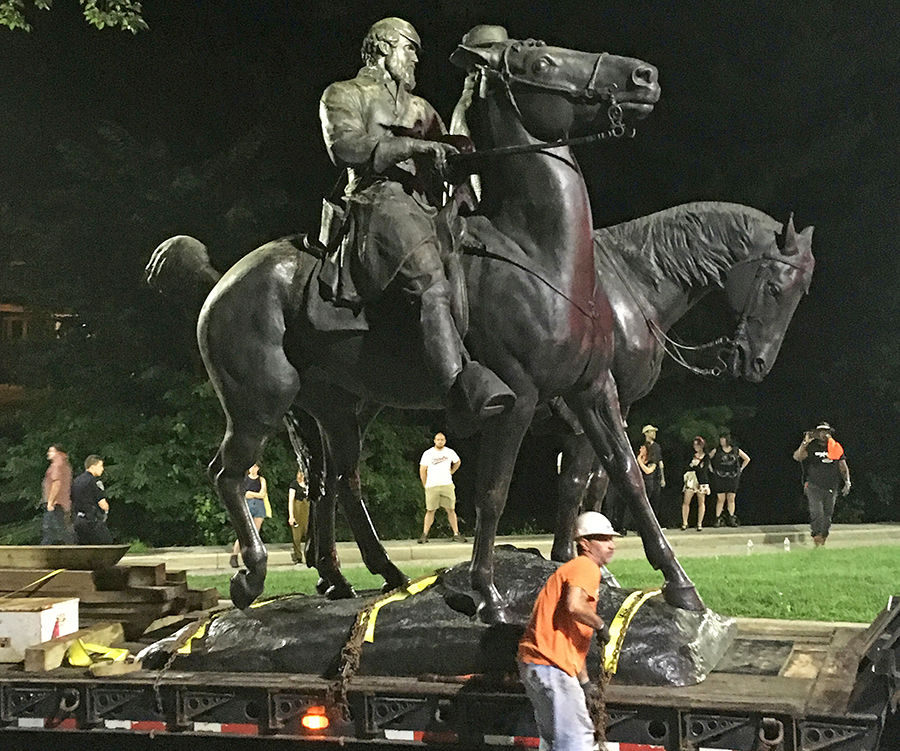With astonishing rapidity, the violent events at Charlottesville, Virginia, have accelerated an already intense debate over what to do with hundreds of Confederate monuments and related statuary across the United States. After officials removed four statues in Baltimore and announced plans to remove a fifth in Annapolis, and after demonstrators spontaneously destroyed a Confederate memorial in Durham, North Carolina, President Donald Trump weighed in on the matter: “Sad to see the history and culture of our great country being ripped apart with the removal of our beautiful statues and monuments,” he wrote in a series of tweets. “You can’t change history, but you can learn from it. Robert E Lee, Stonewall Jackson – who’s next, Washington, Jefferson? So foolish! Also the beauty that is being taken out of our cities, towns and parks will be greatly missed and never able to be comparably replaced!”
Let’s be clear. No one is talking about ripping the country apart — unless it’s the president himself. The Confederate iconography installed long ago were put there as part of an ideological campaign whose goals were to glorify men and women who betrayed the United States in the cause of human slavery and to marginalize descendants of the enslaved. That is historical fact.
Americans face a challenge that might be called the mass curation of our public spaces, in light of contemporary sensibilities, yes, but just as important, in service of what has always been the truth. There may be many ways for local communities to address that challenge; though removing offensive statues may be the most straightforward, in some cases communities may prefer to add historical context and explanation. What is not acceptable anymore is the status quo. Far from ripping the country apart, a full and fair reckoning with Confederate monuments could, if guided by thoughtful leaders, bring people together, on the basis of more equitable and hence more sustainable consensus about the past.
Are George Washington and Thomas Jefferson next? The first and third presidents, and many other Founding Fathers and presidents, held slaves, which does make their legacy a complex challenge for all thoughtful Americans. For purposes of public memorialization, however, there is a distinction between people who partook of their era’s moral flaws and those whose primary claim to fame is to have betrayed their country with the ultimate goal of making it impossible for slavery ever to be abolished in roughly half of the United States.
In any case, the involvement of our historical forebears in slavery ought not to be shied away from, even as we study their achievements and appropriately honor them. You can’t change history, and you can learn from it. It is Trump, actually, who is attempting to do the former, having apparently failed to do the latter.
Editorial by The Washington Post
Send questions/comments to the editors.



Success. Please wait for the page to reload. If the page does not reload within 5 seconds, please refresh the page.
Enter your email and password to access comments.
Hi, to comment on stories you must . This profile is in addition to your subscription and website login.
Already have a commenting profile? .
Invalid username/password.
Please check your email to confirm and complete your registration.
Only subscribers are eligible to post comments. Please subscribe or login first for digital access. Here’s why.
Use the form below to reset your password. When you've submitted your account email, we will send an email with a reset code.